|
Displaying items by tag: watercolors

The Middlebury College Museum of Art in Middlebury, VT is currently exhibiting a selection of rare watercolors and drawings of Vermont by the American painter Edward Hopper (1882-1967). Best known for his depictions of urban and rural life in America, Hopper’s paintings of Vermont are not widely known and many of them have not been on public view in nearly 50 years. Edward Hopper in Vermont, which was assembled from museums and private collections, marks the first time Hopper’s Vermont works have been displayed together in their home state.
Hopper, and his wife Jo, a fellow artist who was also his model, muse, and lifelong travel companion, made five trips to Vermont during the summers between 1927 and 1938. Hopper’s early paintings from these trips depict Vermont’s most recognizable scenery – rolling green hills dotted with bright red barns and dramatic distant peaks. His later paintings focus on the White River Valley and its vast meadows, wide pastures, and everyday roadside scenes. These works are a departure from Hopper’s usual style as they lack any architectural form or signs of human presence.
Edward Hopper in Vermont will be on view at the Middlebury College Museum of Art through August 11, 2013.

Fourteen watercolors by the Spanish surrealist painter, Salvador Dali (1904-1989), will be sold at Bonham’s Impressionist and Modern Art auction in London on June 18, 2013. Commissioned by the publisher Jean-Paul Schneider in 1969, the watercolor fruit studies have been in private collections since their creation. The paintings are expected to garner a total of $1.5 million.
In the ‘FruitDali’ series, the painter takes traditional 19th century botanical lithographs, which were originally used as scientific illustrations, and paints over them using his iconic surrealist twist. Dali infuses each fruit with humanistic qualities including legs, arms, and facial expressions. The works are a testament to Dali’s ability to find human forms in the ever-inspiring natural world.
William O’Reilly, Director of Bonhams Impressionist department, said, “These compositions are a fabulous illustration of Dali’s artistic approach. By overlaying such traditional images with his famous artistic vocabulary of dragons, hooded figures, crutches and weeping eyes, he gives us an insight into his own hyper-fertile imagination.”

On Saturday, May 11, 2013, the Crystal Bridges Museum of American Art In Bentonville, Arkansas launched two exhibitions dedicated to American genre painting. Genre painting, which became popular during the mid-19th century, involved the depiction ordinary scenes of everyday life. As religious artworks waned in prevalence, genre painting struck a chord with the public as they could easily relate to the narratives, which spanned various races, regions, and classes.
American Encounters: Genre Painting and Everyday Life presents five paintings by a handful of the most well known artists from the movement including George Caleb Bingham (1811-1879), Eastman Johnson (1824-1906), and Arthur Fitzwilliam Tait (1819-1905). Between Bingham, who painted scenes of life on the American frontier, Johnson, who captured the true spirits of the people of New England, the western frontier, the slavery-ridden south, and prominent Americans, and Tait, whose subject of choice was wildlife, the three artists come together to communicate a varied and comprehensive American experience.
The works in American Encounters are accompanied by two paintings from the Louvre – one is from the Dutch genre painting school and another from the English interpretation of the movement. American Encounters is also complemented b the exhibition Genre Scenes on Paper from Crystal Bridges’ Permanent Collection.
Genre Scenes on Paper provides a sampling of the museum’s 19th century watercolors and drawings, many of which have never been on public view. The exhibition explores themes of work and leisure in the city and country and features works by Winslow Homer (1836-1910), Thomas Waterman Wood (1823-1903), and John Lewis Krimmel (1786-1821). Just as the paintings in American Encounters, these works come together to show how a variety of artists interpreted daily life in a young country still coming into its own.
American Encounters and Genre Scenes on Paper will be on view at the Crystal Bridges Museum through August 12, 2013. American Encounters, which is the second exhibition in a four-year partnership between Crystal Bridges, the Louvre and the High Museum of Art in Atlanta, Georgia, will then travel to the High where it will be on view from September 14, 2013 through January 14, 2014.
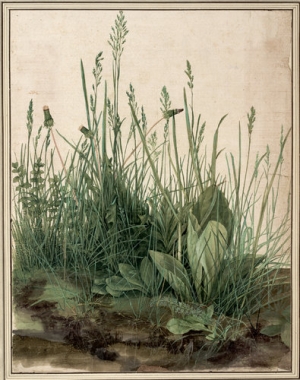
To this day, Albrecht Dürer (1471-1528) is widely considered the greatest German artist ever to live. A master of drawings, watercolors, and engravings, Dürer produced the earliest known self-portrait drawing in European art at the age of 13 as well as some of the first stand-alone landscapes. The craftsmanship of his woodcuts was so exceptional that he singlehandedly changed the public’s perception of the medium from commonplace to fine art.
The National Gallery of Art in Washington, D.C. is currently hosting the exhibition Albrecht Dürer: Master Drawings, Watercolors, and Prints from the Albertina. The Albertina in Vienna, Austria holds one of the finest and largest collections of Dürer’s work including masterpieces such as The Great Piece of Turf, a watercolor nature study of the Renaissance; the beyond iconic chiaroscuro drawing Praying Hands; and his famous self portrait.
Master Drawings, Watercolors, and Prints from the Albertina presents 91 remarkable works from the Albertina as well as 46 related engravings, woodcuts, drawings, and prints from the National Gallery’s own collection. This exhibition, which is the culmination of decades of acquisition, study, and exhibitions of early German art at the National Gallery, will be on view through June 9, 2013.

New York’s Brooklyn Museum and Boston’s Museum of Fine Arts are joining forces to present a landmark exhibition of John Singer Sargent’s watercolors (1856-1925). The exhibition, aptly titled John Singer Sargent Watercolors, will bring together 93 works acquired by both museums during the early 20th century. The Brooklyn Museum’s 38 watercolors were largely purchased form Sargent’s 1909 debut exhibition in New York and The MFA’s works were acquired from a New York Gallery in 1912.
The institutions have been working together on a year-long study of Sargent’s watercolors, which he painted fervently. During his long career, Sargent created over 2,000 watercolors depicting everything from the English countryside to Venetian scenes as well as paintings of the Middle East, Montana, Maine, Florida, and the American west. Sargent painted a number of watercolor portraits of Bedouins and fishermen from the Middle East as well as the native people of the American west. A section of the exhibition will be devoted to the findings from the museums’ extensive study; the analysis revealed new insights into Sargent’s drawing techniques, paper preparation, and use of pigments.
John Singer Sargent Watercolors will go on view at the Brooklyn Museum on April 5, 2013 where it will remain until July 28, 2013. The exhibition will then travel to Boston’s Museum of Fine Arts where it will stay from October 13, 2013 until January 20, 2014. The show will make a final appearance at Houston’s Museum of Fine Arts in 2014.
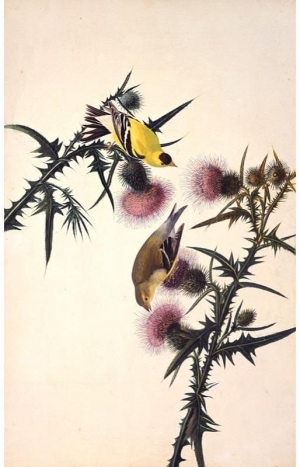
On March 8, 2013 the New-York Historical Society will launch Audubon’s Aviary: The Complete Flock (Parts I-III). The three-part exhibition, which will be on view for three years, celebrates the 150th anniversary of the Society’s purchase of John James Audubon’s (1785-1851) avian watercolors. The exhibition coincides with the release of the book Audubon Aviary: The Original Watercolors for ‘The Birds of America,’ which was published by the New-York Historical Society and Skira Rizzoli Publishing.
Audubon’s Aviary: Part I of the Complete Flock will run from March 8-May 19, 2013 and offers patrons a rare glimpse into Audubon’s earlier years. A self-taught artist, this segment of the exhibition explores how Audubon developed his unmatched style and his use of experimental media. The exhibition will include a selection of rare, early pastels on loan from the Houghton Library of Harvard University and the Muséum d’Histoire Naturelle de la Rochelle in France. Part I will also feature 220 of Audubon’s avian watercolors including the first 175 models engraved in The Birds of America.
Between the exhibition’s three parts, the Historical Society will present all 474 avian watercolors in its collection. The preparatory watercolor models for the seminal The Birds of America (1927-38) will appear alongside progressive media installations that aim to reinforce the connection between art and nature.

During a career that spanned much of the 20th century, Russian artist Marc Chagall (1887-1985) was associated with a number of artistic movements, making a name for himself as a pioneer of modernism. Considered one of the most successful artists of his time, Chagall drew inspiration from his Orthodox Jewish upbringing, a theme that prevailed through the many mediums and styles he explored.
The Musee de Luxembourg in Paris has organized an exhibition devoted to the artist titled Chagall: Between War and Peace. The show, which focuses on Chagall’s work between 1914, when he developed his own style, and the mid-1950s, when many critics deemed his work repetitive, includes approximately 100 oil paintings, watercolors, drawings and etchings in relatively chronological order.
Between War and Peace is broken into four pivotal periods in Chagall’s life and work. After living in Paris from 1910 to 1914 and associating with many prominent figures of the avant-garde, Chagall returned to his native Russia to be with his future wife, Bella. “Russia in Wartime” explores Chagall’s work from this period, which was haunted by the brutality and horrors that World War I brought to his homeland.
In 1922, Chagall left Russia for Berlin. He soon returned to Paris where he re-established himself as a painter. “Between the Wars” focuses on this period, which includes Chagall’s work as an illustrator. Many of the pieces from this time feature landscapes, portraits of the artist with his wife, circus scenes, and hybrid creatures, which are prime examples of Chagallian bestiary.
In 1937, Nazis seized any works by Chagall that resided in public collections in Germany. As World War II unfolded, Chagall left France for New York, which is the subject of “Exile in the United States.” His work took a somber turn as his native land was ravaged by the war. A particularly productive time for Chagall, he also created a number of works devoted to Bella, who died in 1944.
The exhibition’s final portion, “The Post-War Years and the Return to France,” explores Chagall’s move back to Europe in 1949. During this time Chagall experimented with stained glass, sculpture, ceramics, mosaic, and various engraving techniques. His works from this period radiates with light and emotional tonalities.
Chagall: Between War and Peace is on view through July 21, 2013.
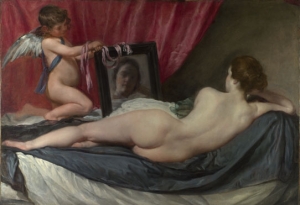
The London gallery Agnews announced that it will be closing its doors on April 30, 2013 after nearly 200 years in business. One of the world’s oldest art dealers, Agnews, which specializes in Old Master paintings, will make a final appearance at the European Fine Art Fair in Maastricht (March 15- 24, 2013).
Business for Agnews has been cooling off since chairman, Julian Agnew, sold the gallery’s historic Bond street location for a reported $39 and moved to a smaller space. Agnew attempted to sell the business last year, but negotiations with a prospective buyer failed. The privately owned firm, which has 16 family shareholders, revealed a loss of almost $3 million in records dating back to 2011.
Agnews has been selling off its stock, which once included Old Master works by Thomas Gainsborough (1727-1788), Anthony van Dyck (1599-1641), and Rembrandt (1606-1669) as well as watercolors and British paintings. Whatever is left in the gallery will be taken care of in due time. Agnew will continue to work as an advisor to clients and will keep the company’s family name.
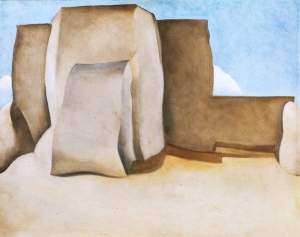
On view at the Montclair Art Museum in New Jersey through January 20, 2013, Georgia O’Keeffe in New Mexico: Architecture, Katsinam, and the Land focuses on Georgia O’Keeffe’s (1887-1986) life from 1929 to 1953. During this time, O’Keeffe lived in New Mexico and found herself enthralled by her surroundings as well as the Native American and Hispano cultures of the region.
While O’Keeffe’s early career as one of the first American abstract painters and her relationship with American photographer and art dealer Alfred Stieglitz (1864-1946) have been examined at length, O’Keeffe’s time in New Mexico has been less studied. The exhibition at the Montclair Art Museum features over 30 paintings and works on paper depicting New Mexico’s local architecture and landscape. From 1931 to 1945, O’Keeffe created numerous drawings, watercolors, and paintings of Kachina dolls (or Katsinam), which are carved representations of Hopi spirit beings. The exhibition includes 15 of these works, which are presented alongside actual Kachina dolls.
The Montclair Museum of Art will compliment Georgia O’Keeffe in New Mexico with a small presentation of three O’Keeffe works from a private collection including two oil paintings, Black Petunia and White Morning Glory 1 and Inside Clam Shell, and one pastel on paper, titled Pink Camellia.
The exhibition at the Montclair Art Museum was organized by the Georgia O’Keeffe Museum in Santa Fe, New Mexico and will travel to the Denver Art Museum (February 10-April 28, 2013), the Georgia O’Keeffe Museum (May 17-September 8, 2013), and the Heard Museum in Phoenix, Arizona (September 27, 2013-January 12, 2014) after its run in New Jersey.
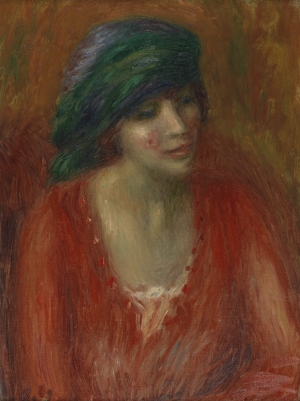
The Pennsylvania Academy of the Fine Arts (PAFA) in Philadelphia announced plans to build a new gallery to display their works on paper collection. The addition will be housed in the museum’s Historic Landmark Building, which was designed by the acclaimed American architect, Frank Furness (1839-1912). A $250,000 grant from The Richard C. von Hess Foundation will be used to fund the project.
Works on paper are a huge component of PAFA’s permanent collection, encompassing over 75% of the museum’s holdings. The collection features drawings, watercolors, sketchbooks, prints, photographs, and experimental media from all periods of American art. Highlights include a collection of photographs by Thomas Eakins (1844-1916), studies and sketchbooks by William Glackens (1870-1938), and works by John Singleton Copley (1738-1815), Mary Cassatt (1844-1926), Arthur Dove (1880-1946), and Robert Motherwell (1915-1991).
The new gallery will allow the institution to significantly expand public access to its vast collection while keeping the light-sensitive objects safe. A separate space will be allotted for scholars conducting research and curators and faculty who will use the collection for educational purposes. PAFA has selected the Philadelphia-based architectural firm Atkin Olshin Schade to design the Works on Paper Gallery. Construction is expected to start early this year and last until Summer 2013.
|
|
|
|
|